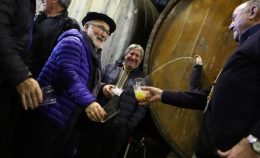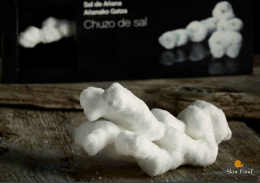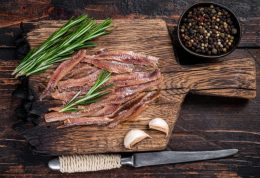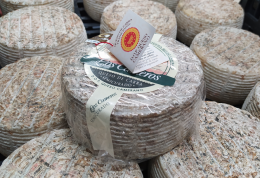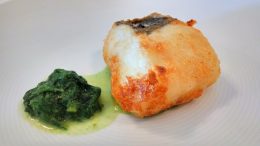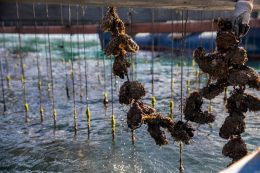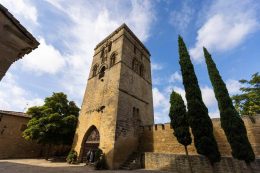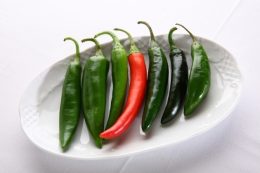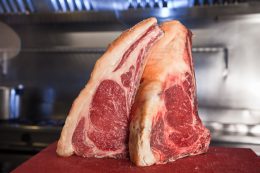Unearthing the secret lurking deep within the Barbacoa pit

Despite the linguistic similarity, Mexican barbacoa is not to be confused with mere “barbecue” in which flames blister and char steaks, burgers and hotdogs. No, Barbacoa is slow food at its finest. The dish is a ranch-born exercise in pit-cooking patience.
Step 1: Dig a pit in the ground.
Step 2: Collect aged mesquite branches from the ranch floor with which to fire up a batch of glowing coals.
Step 3: Shovel the coals into the pit and inter a large pot of seasoned meat—be it lamb, beef or goat.
Step 4: Cover and wait, and wait, and wait. The Gods of barbacoa will reward your patience.
Like all Mexican dishes, there are distinct regional varieties of barbacoa. A traditional format from Northern Mexico calls for the whole head of a cow wrapped in maguey leaves. The brains, eyes, jowls, sweetbreads, tongue and other tasty bits steam gently in a delicious horror show. But, more commonly, other cuts of meat are seasoned with dried chiles, garlic, onion, tomato, white vinegar, and salt & pepper before they slowly steam/braise in earthy convection.
The results are a fall apart, smoky meat and a concentrate of fat-fortified, spicy broth. The shredded meat rightly belongs nestled in a fresh corn tortilla warmed on a griddle and dipped in the broth. But, it is entirely acceptable as a torta, sandwiched within a warm bolillo bun. Nothing more than white onion, lime, and cilantro is needed to bring harmony to the unctuous meat filling. The taste? It is the essence of meat, with faint notes of smoke. Your mouth hums with chile heat, soothed by a thin coating of rendered fat, while the zing of lime, tomato and vinegar bounces off the sweet freshness of raw onion and cilantro balancing each bite.
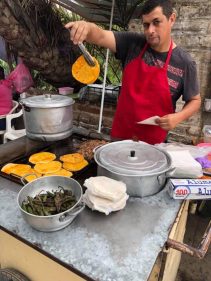
Beef barbacoa
Barbacoa is a common dish for special gatherings in Mexico, but in Todos Santos (Baja California Sur), beef barbacoa is everyday breakfast. Yes, I said breakfast. At the street cart, Barbacoa Zain, the owner and his mother serve piping hot tacos and tortas on Calle Militar to throngs of locals who perch around the grill with mouths agape like baby birds. Shredded beef warms on the grill beside tortillas and chile peppers, while a large pot of simmering consommé made from the strained cooking broth waits to coat tortillas or to be dispersed into Styrofoam cups for sipping.
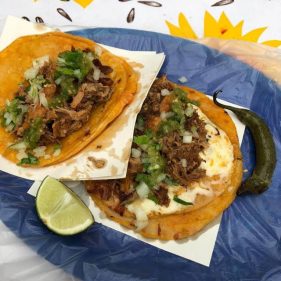
In Queretaro, Mexico, north of Mexico City, exists Restaurante Santiago, a venerable altar to the gods of lamb barbacoa. Outside the restaurant, tortillas toast on the griddle as men stand over a large wooden box (caja de china) lifting out layers of precious cargo insulated by agave leaves. The aroma of intense woodsmoke hits the passerby. One-by-one, pale pieces of seasoned goat meat, slow cooked in a pit overnight, are extracted still glistening with their juices, tossed on the chopping block, and quickly tucked into tortillas for the long line of on-the-go eaters.
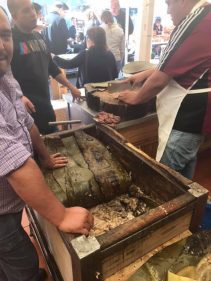
Inside the cavernous restaurant, families convene around large tables and an army of workers man large griddles covered with handmade tortillas, quesadilla, molletes and more. Ordering is an unceremonious declaration of the obvious: two barbacoa tacos and a bowl of consommé, the heavenly nectar that results from hours of slow braising. When the consommé arrives, the smell of campfire wafts from the translucent brown broth and a sunken treasure of garbanzo beans lurks in its depths. The locals add onion, cilantro, and a delicious guajillo salsa to the bowl, as if by muscle memory and then sip on the thin liquid that delivers the intense essence of jerky. The tacos arrive nestled between two layers of protective banana leaf. The first bite is as perfect as first bites get. Smokey, meaty, tender, and surrounded by a corn tortilla that absorbed the essence and offered a balancing sweetness.

In San Diego, a restaurant called Aqui es Texcoco is the reigning authority on lamb barbacoa. Their lamb consommé, soup-up with soft and creamy garbanzo beans, is worth a visit alone. Yet, a contender for the crown is a little known and highly unorthodox barbacoa source in the City Heights neighborhood of San Diego. Candy Land Minimart is a mild mannered convenience store all week. But come the weekend, the shelves are pushed aside so that a tiny, makeshift kitchen can serve barbacoa to the hordes queued up outside. In addition to the usual taco format, Candy Land serves barbacoa taquitos (hard rolled tacos) smothered in crema and aged cotija cheese.

Still, my favorite barbacoa experience to date, was at the modest home of a Todos Santeño family. As the guests arrived, sheets of rusted corrugated metal were lifted from the home’s front yard pit. A suitcase-sized tin foil wrapped package was exhumed from its earthen kiln where it had braised since the wee morning hours. From where I stood eagle-eyeing the process, I could see the steaming roasting pan carried away into the home. Every fiber of my being screamed “follow that pan!” I didn’t want to miss a secret of the Barbacoa process. But I minded my manners, twitching through polite conversation and side-eying the door. At last, piping hot bowls of shredded beef in red broth hit the table. We sat together in the home’s front yard, the generous family, their long-time friends, family, and one wide-eyed, seemingly ravenous gringa. Barbacoa has never tasted better.
Now, where to dig my pit?
(Jamie Kelly)
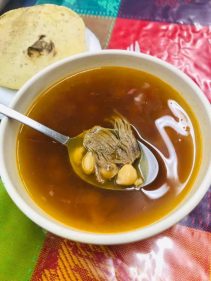
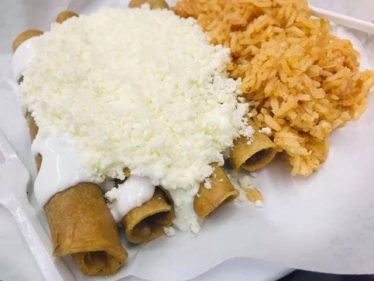


Jamie Kelly is an American marketing professional turned gastronaut. She is eating her way through a full-spectrum exploration of food culture in Spanish-speaking lands across the globe, and staging ambitious re-enactments in her own kitchen. To follow along on the expedition, like Jamie’s Facebook page and Instagram @jamie_gastrocurious. Watch for her new blog, GastroCurious, coming in summer 2019 with tasty tales, recipes, Chef chats, and more.








